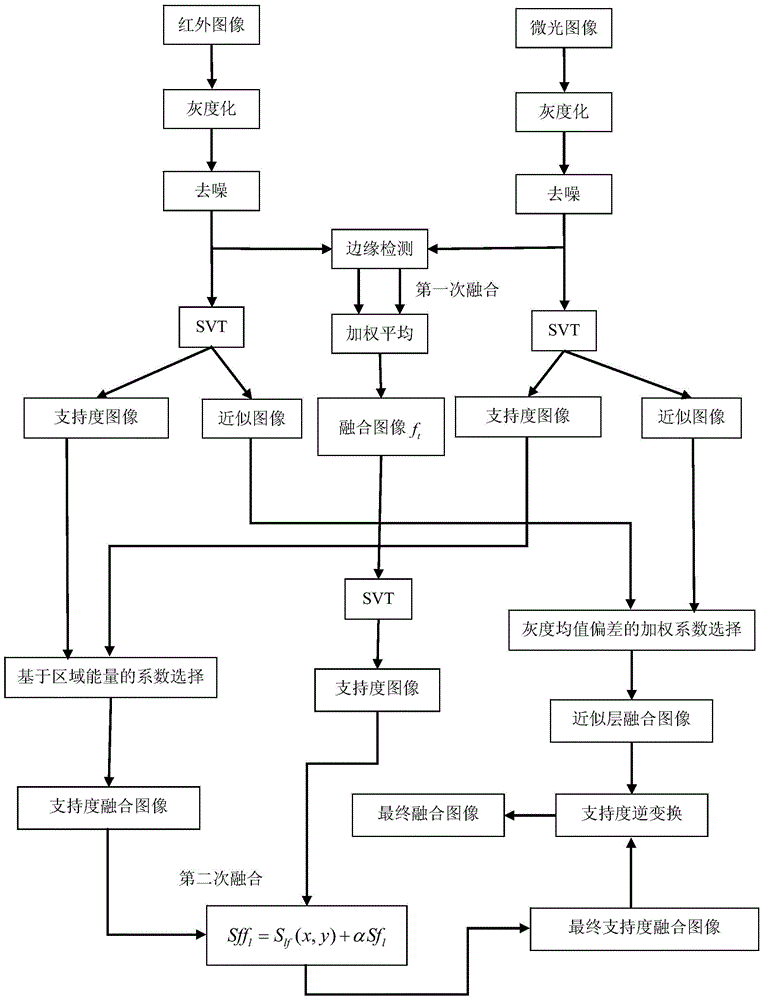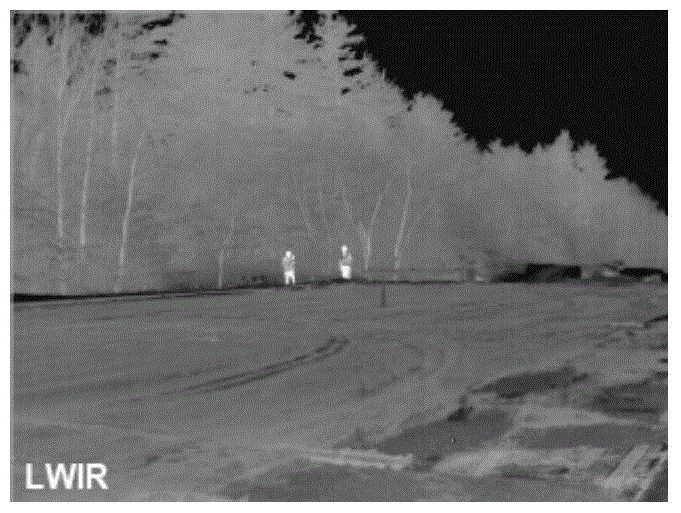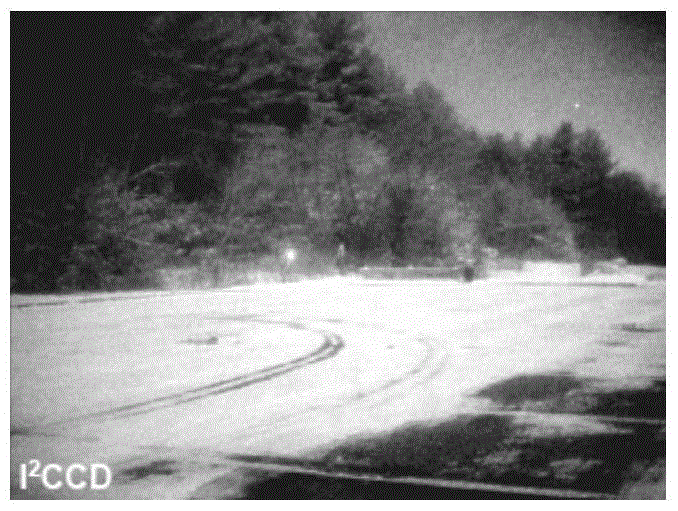Infrared and low-light image fusion method based on edge information and support transformation
A low-light image and infrared image technology, which is applied in the field of image fusion, can solve the problems of irrelevant thermal contrast of the target background, insensitivity to scene brightness changes, and flickering, etc., to achieve clear edge detail information, no ringing effect, and calculation fast effect
- Summary
- Abstract
- Description
- Claims
- Application Information
AI Technical Summary
Problems solved by technology
Method used
Image
Examples
Embodiment Construction
[0036] combine figure 1 , the infrared and low-light image fusion method based on edge information and support transformation of the present invention, comprising the following steps:
[0037] Step 1 Image preprocessing: first grayscale the infrared image and the low-light image respectively, and then remove noise by median filtering;
[0038] Step 2 edge detection: edge detection is performed on the processed infrared image and the low-light image obtained in step 1. The steps of edge detection are:
[0039] First: use the Sobel (Sobel) edge detection operator, which is composed of two convolution kernels (Δ x f(x,y), Δ y f(x,y)) is obtained by performing convolution operation on the original image (referring to infrared image and low-light image) f(x,y). If the difference is used instead of the first-order partial derivative, the calculation method of the edge detection operator is as follows :
[0040]
[0041] where Δ x f(x,y) indicates that the horizontal edge in...
PUM
 Login to View More
Login to View More Abstract
Description
Claims
Application Information
 Login to View More
Login to View More - R&D
- Intellectual Property
- Life Sciences
- Materials
- Tech Scout
- Unparalleled Data Quality
- Higher Quality Content
- 60% Fewer Hallucinations
Browse by: Latest US Patents, China's latest patents, Technical Efficacy Thesaurus, Application Domain, Technology Topic, Popular Technical Reports.
© 2025 PatSnap. All rights reserved.Legal|Privacy policy|Modern Slavery Act Transparency Statement|Sitemap|About US| Contact US: help@patsnap.com



